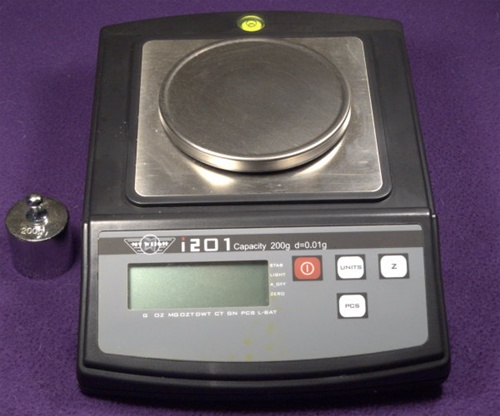

Bob Thompson, our resident Make: Science Room lab geek, answered a question in the comments for the “Setting Up a Home Science Laboratory Part II – Gearing Up” topic, about buying digital scales. I thought it was worth posting here for the benefit of others.
Cynthia asked:
What would you recommend in the way of a digital scale for intermediate/high school science? I was thinking of purchasing one that was a 1000 g capacity with a 0.1 sensitivity. Could this both serve chemistry and physics, etc.?
Bob’s reply:
Good question. The two big trade-offs in buying a balance are capacity and resolution. Ideally, we’d all like an inexpensive balance with 0.0001 gram resolution, but unfortunately, there aren’t any such animals.

The balance I chose two or three years ago for my own home lab is the desktop MyWeigh iBalance 201, which has 200 gram capacity and 0.01 gram (centigram) resolution. That’s still a current model, and is available in Maker Shed and elsewhere. However, it’s also a $100+ balance.

If you’re looking for something a bit less pricey, Maker Shed also carries a portable $33 electronic balance (on sale through 10/31 for $29) that has the same 200 gram capacity and 0.01 gram resolution. I have one of those as well, and it’s a very nice little scale. I suspect it probably isn’t quite as durable as the i201, but OTOH, it’s less than a third the price. (It’s also useful around the house. My wife just used it yesterday to see if she needed to put a second stamp on an envelope.)
My take on this is that 200 g is sufficient capacity. Almost any experiment you do that would use the 1000 g capacity of the balance you’re considering can be scaled down to work within the 200 g capacity of these balances. OTOH, having 0.01 g resolution instead of 0.1 g resolution is very nice, particularly for chemistry.
It’ll also save you money on chemicals. For example, if you need to make up a solution to a particular accuracy, being able to weigh out (say) 7.87 g of the chemical and making up 100 mL of solution is cheaper than having to weigh out 78.7 g of the chemical and make up 1,000 mL of the solution.
This way to the Make: Science Room >>
ADVERTISEMENT





